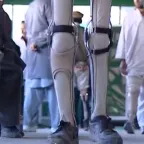A Memory of Solferino
This is the book that prompted the creation of what is now a worldwide movement with millions of members and made the name of Henry Dunant known everywhere. The account has moved many people and …
This is the book that prompted the creation of what is now a worldwide movement with millions of members and made the name of Henry Dunant known everywhere. The account has moved many people and …
As the guardian of international humanitarian law (IHL), the ICRC supports efforts to end impunity for international crimes and is keenly interested in the establishment and jurisprudence of …
Document suggesting model legislative provisions to be used by States as guidance in the drafting of legislation on the protection of missing persons and on the prevention of this situation. ADVISORY …
The ICRC recently published an interpretative guidance clarifying what international humanitarian law says concerning civilians directly participating in hostilities. The aim is to help distinguish …
Adopted on 8 June 1977, Protocols I and II are international treaties that supplement the Geneva Conventions of 1949. They significantly improve the legal protection covering civilians and the …
Legislation for Common Law States on the 2008 Convention on Cluster Munitions ADVISORY SERVICE ON INTERNATIONAL HUMANITARIAN LAW _____________________________________ Model Law Convention on Cluster …
Ratification kit providing an overview of the steps involved in State adherence to the 2008 Convention on Cluster Munitions . 2008 Convention on Cluster Munitions Ratification kit International …
Ten years ago the ICRC helped draft the Guiding Principles. How have the Principles contributed to improving protection for IDPs? What gaps remain? An article by Cordula Droege : Development in the …
Fact sheet describing some elements and modalities which could bring about a concrete improvement in the effectiveness of sanctions in the efforts by all parties to ensure greater respect for …
  Cluster munitions have been a persistent problem for decades. These weapons have killed or injured tens of thousands of civilians in war-affected countries. In May 2008, more than 100 States …

Try one of the following resources:
Created in 1863, the ICRC library, alongside the ICRC archives, provides an indispensable documentary reference on the organization itself and international humanitarian law.
International humanitarian law is based on a number of treaties, in particular the Geneva Conventions of 1949 and their Additional Protocols, and a series of other instruments.
Customary international humanitarian law consists of rules that come from "a general practice accepted as law" and that exist independent of treaty law.